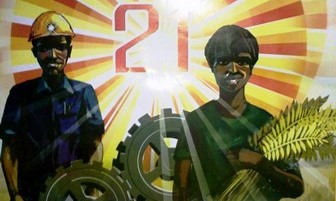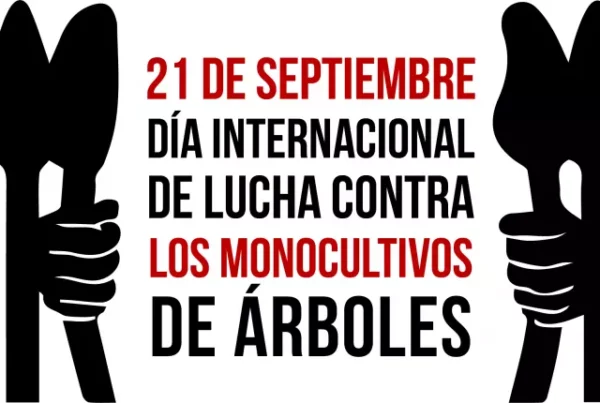by Giorgos Velegrakis
This interview was originally given to Giorgos Velegrakis for the Greek environmental magazine Oikotrives.
Giorgos Velegrakis (G.V): For a few years now Ethiopia has been one of the countries which has been strongly associated with the phenomena of land grabbing. Why?
Jonah Wedekind (J.W.): Land grabbing has become a popular term since at least 2007/08, when sky rocketing food and fuel prices were followed by a rush of investors for agricultural land in the Global South, particularly in Africa, and indeed Ethiopia is very often associated with the phenomenon in the media. Progressive NGO’s like GRAIN were very effective in popularising the term land grabbing with the aim of mobilising international awareness and resistance against the rush for land. They criticised that land grabbing massively displaces indigenous communities, threatens livelihoods of peasants and causes ecological injustices. But I think it would be wise to be more cautious with the land grab terminology because over the years, unfortunately, it became overused and abused. By now even World Bank economists use the term land grabbing when they basically promote agricultural investments and privatisation of land. Many do not acknowledge the historic origins and political nature of land grabs and so contribute to depoliticise the term as well as the process.
In her 1913 classic The Accumulation of Capital, Rosa Luxemburg was one of the first to conceptually use the term Landnahme [German for land grab] with which she referred to the occupation of non-capitalist lands by capitalists. She was of course building on Marx who, in describing the 16-18th century English enclosures, noted that “land grabbing on a great scale, such as was perpetrated in England, [was] the first step in creating a field for the establishment of agriculture on a great scale” (Marx, Capital Vol. 1, Ch. 5 (15)). Through land grabbing (the enclosures) the people of the land (the commoners) were driven off the land (the commons) in great numbers and were left with few alternatives but to sell their labour to industrial capitalists or private agricultural landholders. Some critical analysts argue that today’s land grabs in the Global South are a continuation of the long history of enclosures of common land. But perhaps this is a slight simplification of a very complex historical process. Is it not curious that so much current attention is focused on land grabbing in the Global South, when it is still very much an ongoing process in Europe today? It is ongoing in Germany under the pretext of economic efficiency, where scattered lands of former East German agricultural production cooperatives are bought up and concentrated in the hands of private investors for the production and processing of biofuels. It is happening at an obnoxiously dizzying rate in Greece under the pretext of austerity, where forms of land grabbing range from forced privatisation of public assets including land, to exploiting lands for mining, to selling parts of islands to rich tycoons, to registering communal garden plots so as to push pastime gardeners to produce for profit or give up their plots, and so on. Basically, land grabbing comes in all shapes and sizes and we have to begin acknowledging that there is a huge diversity of political and economic drivers and social and ecological outcomes. To point this out is to take a first step at offering a more politically useful understanding with which to deepen crude media reports and agitprop NGO stories of land grabbing. The usual story goes that land grabbing is a phenomenon where some big investor from China buys up hundreds of thousands of hectares of supposedly “unused” farmland in rural Ethiopia and thereby displaces and further impoverishes local communities. Ethiopia has really become the cliché example for land grabbing in Africa, but this is precisely why I think it is actually a very useful case to show that land grabbing is a highly diverse process with many different drivers and outcomes of political, economic and social struggles over the control of access, use and valuation of resources like land.
(G.V.): Who are the investors, why are they investing in Ethiopia and why in agricultural land?
(J.W.): We often hear that foreign investors, especially from fast-developing countries like China, India or food-scarce countries like Saudi Arabia are the dominant investors in Ethiopia. But this picture is not entirely accurate. The numbers of Chinese investments in agriculture in Africa are often vastly exaggerated and in fact, Chinese investments in agricultural land in Ethiopia are near to non-existent. Indian investors like Karuturi Global are prominent for having leased huge swathes of land in Ethiopia’s lowland frontier of Gambella, but it recently emerged that the company failed to use its land productively due to ecological constraints, disputes with local communities and sheer misjudgement of how much it could produce on the land that they leased from the Ethiopian government. Saudi Arabia was until 1992 the sixth largest producer of wheat in the world, but the sheer water intensity and insanity of producing wheat in the Saudi desert proved disastrously unsustainable to the extent that Saudi Arabia is now completely phasing out its own wheat production and is looking elsewhere to grow food – to Ethiopia. Yet most investments in Ethiopia, which are associated with Saudi Arabia because they are run under the name of Saudi Star, are actually undertaken by an Ethiopian tycoon called Al Amoudi. In fact, the majority of agricultural investors in Ethiopia are actually urban businesspersons or returning Ethiopian diaspora. That is to say, national capital does seem to play a significant role in the investment based transformation of agriculture in Ethiopia. If you take coffee for example, which is by far the country’s most important cultural and economic cash crop, you will only find Ethiopians investing in land for coffee plantations. This is because the state prohibits foreign investments in the coffee sector. The situation is similar with the sugar industry in Ethiopia, most of which is under strict control of the state owned Ethiopian Sugar Corporation. Although the corporation is currently financing a massive expansion of irrigated sugar plantations in the Omo Valley with cheap loans from China and India, the state still oversees the expansion of the sugar sector. Actually, sugar is also a good example to show that the current rush of foreign investors into Ethiopia is not a new phenomenon at all. In the 1950s-70s, the Dutch company Handels Vereniging Amsterdam acquired land and ran a number of large sugar factories and plantations until the mid-70s, when all private lands and industries in Ethiopia were nationalised by the Soviet-backed Derg Regime. Much of the critical press concerning the Dutch company’s activities at the time is remarkably similar to current critical discourse on land grabbing associated with the expansion of sugar plantations and expulsion of local communities in the southern Omo Valley. While I do not want to understate the rush of foreign investors into Ethiopia, I want to stress that the role of the state and national elites in maintaining and gaining control over access to land must not be ignored.
One of the reasons why national and foreign investors are attracted to invest in Ethiopia is because agricultural land and labour is relatively cheap. This is partly because the Ethiopian state is actively trying to attract investments into agriculture in order to achieve an agrarian transformation from an economy based on peasants to one dominated by agribusiness. Another initial driver of foreign investments in Ethiopia, I suspect, may have been financial speculation. In 2007/08 a large number of investors came to Ethiopia to produce biofuel crops like Jatropha and Castor when the oil prices were high. Yet when prices stopped rising and moreover declined, many prominent foreign investors like Emami Biotech gave up on their projects very quickly. Some investors of stock-market listed companies post videos and photos online to advertise their mega farms, but when you actually visit the plantations you will merely find abandoned test fields. Recently the Ethiopian state identified over 500 agricultural investment projects for cancellation because many investors did not use the land they had leased from the government. This suggests that for some speculative investors, acquiring land as collateral may be a way by which to try to extract rent from the land without actually privately owning or productively using the land they leased from the Ethiopian government.
(G.V.): But why does the state actually seem to encourage agricultural investments as if land grabs are part of the development strategy?
(J.W.): The Ethiopian state is by no means a helpless bystander in the face of the current rush of investors for agricultural land. In fact, Ethiopia tries to emulate the East Asian development strategy pursued by the state-capitalist tiger economies of Korea and Taiwan in the 50s and 60s, where a developmental state strongly regulated foreign and national investments. Ethiopia was also not run-over by neoliberal Structural Adjustments in the 1980s and 90s which enforced the privatisation of land in some other African countries. So land in Ethiopia remains vested in the state and cannot be bought or sold as easily as in a free market. This means that all investors wanting to acquire land in Ethiopia have to lease it from the state. For years, the Ethiopian state tightly controlled and invested heavily in small-scale farmers, hoping that they would one day become more productive, generate surplus capital and somehow stimulate industrial development. But this strategy was far too schematic and slow and so now the government argues that investments in large-scale agriculture and agro-industries are needed to achieve rapid agrarian transformation. The high modernist imaginary of agrarian transformation is very much a central part of the development strategy of the Ethiopian state, but it is also the Achilles-heel of political and social stability. Ethiopia’s political elites know this only too well, because they themselves once came to power through a peasant revolution in 1991 by overthrowing the socialist Derg Regime that had fatally mismanaged agriculture and excessively squeezed peasants in the 1970s and 80s through forced collectivisation and resettlements. The current modernist vision of agrarian transformation is therefore supposed to strike a balance between small-scale farmers and large-scale investors. Although the government claims that it is being careful to avoid massive peasant displacement, for example by encouraging the contracting of small-scale farmers by investors, critics argue that it is an explosive socio-economic mix to place large-scale investors next to small-scale farmers.
(G.V.): What are the actual impacts of agrarian transformation on local communities?
(J.W.): It seems that most research on land grabbing has until now been focused on trying to find out the scale and the drivers of the phenomenon. So there are numerous open-source database projects like the Land Matrix which try to establish who is investing where, on how many hectares of land, growing which crops, and so on. But far less work has been done to try to get the facts right on the social and economic impacts of land grabbing, or for that matter to try to explain the diverse political reactions that unfold at different scales and spaces in different societies.
If land grabs are indeed to become the main strategy for agrarian transformation in Ethiopia, this would raise many important questions. For instance, is it practically possible to facilitate evermore large-scale investments in land without disadvantaging or displacing small-scale farmers, who make up nearly 80% of Ethiopia’s entire population? And if agrarian transformation actually were to massively dispossess small-scale farmers from their land, could they be sufficiently absorbed elsewhere in the economy or would they become part of a globally growing, socially marginalised and politically dangerous surplus population – which Mike Davis alarmingly describes in Planet of Slums? So the question of land becomes very much a question of labour too; is it possible to create enough employment to absorb those without land, or to extend social protection to those without a job and a wage? And who might then benefit or lose out from social welfare programmes provided by states that seemingly have the will to improve the human (and often inhumane) conditions of their citizens? These are some questions that need to be taken seriously.
In my own research I have seen very many diverse social and economic outcomes in different areas of Ethiopia, ranging from displacement of farmers and agro-pastoralists without compensation, to exploitation of wage labourers, especially female and child workers. But I also spoke to farmers who make an extra income on neighbouring investments farms, or young migrants who prefer to work for a wage than for their fathers on the family farm. I started my research, thinking that farmers and labourers have little power against big agribusiness. But I did notice different arts of resistance to commercialisation or displacement and learned about everyday struggles for land access by farmers or for labour rights by workers.
(G.V.): What are some reactions to agrarian transformation in Ethiopia and to what extent can they challenge agricultural investors?
(J.W.): One would imagine that forced displacement or resettlement of people from their land would be the type of conflict that triggers organised resistance or social movements. Yet there are no well organised struggles for land access in Ethiopia, at least not at a scale comparable to the famous Latin American Landless Worker’s Movement (MST) or La Via Campesina. But sporadic and violent forms of conflict over land do happen in some areas where agro-pastoralists, who are often armed, face restrictions in their nomadic routes or seasonal settlement areas due to large-scale agricultural investment projects. The problematic of land struggles by small-scale farmers in Ethiopia is that legally they merely have a use-right to land while the state owns the land. So, if a farming community tries to reclaim land from an investor, they inherently have to challenge the institutions of the state also. It is particularly difficult for a group of farmers to organise autonomous land movements because local, state-affiliated peasant associations tightly control land redistribution and access for small-scale farmers. The same applies for struggles over labour rights on large farms. Since most large-scale investment farms were established only fairly recently, labour unions and workers associations have had little time to develop independently of the state. Mostly, working conditions and salaries remain poor on investment farms and often agricultural wage workers are the poorest of the poor in Ethiopia. But just because the rural highland and lowland frontiers of Ethiopia at first glance appear to be spaces where no movements exist, this does not mean that daily forms of resistance and solidarity do not take place. In one case that I am studying, daily labourers frequently refuse to work, or pay-roll workers confiscate the investors’ machinery in order to obtain overdue payments or enforce a pay rise. In areas where labour markets are emerging or becoming competitive because a number of different investors have set up plantations in a concentrated area, wage labourers are quick to compare and discuss wages amongst each other and demand a pay rise if an investor pays less than a neighbouring one. But most often, it seems, farmers and labourers first seek assistance from the state before they dare challenge investors. This means that there is a long way to go before an organised, autonomous culture of movements for either land access or labour rights, not to mention environmental justice, can collectively organise to challenge the social and ecological ills of agrarian transformation and enclosures of the commons in Ethiopia.






2 Comments